Whether you live in an apartment or multi-story building, creating a bonsai balcony is an incredible way to add some nature to your home. It doesn’t matter if the space is large or small. These miniature landscapes are ideal for any area, but it’s down to you to maintain the shape of the tiny trees.

Bonsai is one such plant that helps urban residents to enjoy its natural beauty at home. The word ‘bonsai’ is derived from the Japanese word ‘bon’ which means tray and ‘sai’ which means growing. So basically, bonsai means growing trees in trays. In this guide, we’ll show you how to plan for and design your bonsai balcony while also showing you how to care for the trees.
Steps to Create a Bonsai Balcony
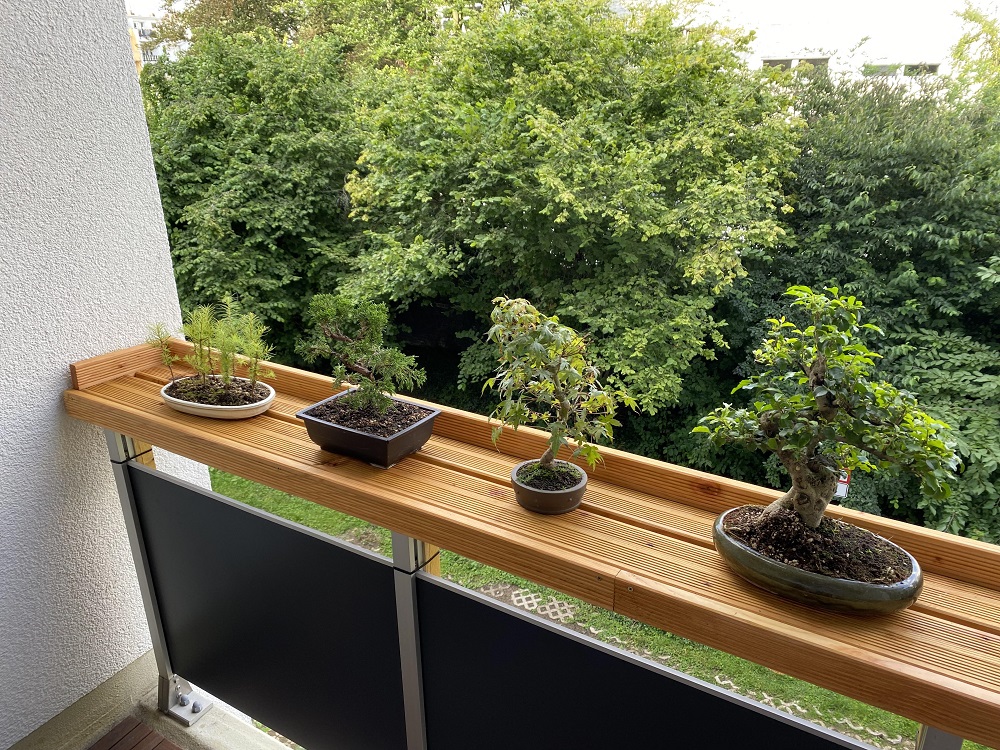
We’ll start with the steps you need to take in transforming your balcony into a home for your bonsais. It’s essential that you pay close attention to each one so that you don’t go overboard. Trust us when we tell you it’s easy to become addicted to collecting these small trees.
01. Choosing the Right Bonsai Species:
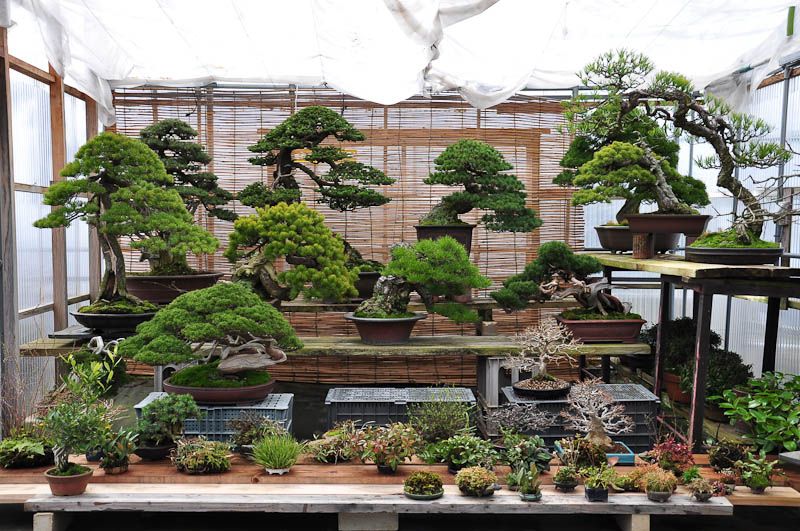
Before you do anything else, you need to decide on the type of bonsai to grow on your balcony. Not all of them will thrive in the location, but it will set the tone for your theme. If you want a display of flowers, you’ll want some floral species. Not too keen on pollen? Aim for evergreen conifers.
There are also some fruit bonsais you can consider, but you may be attracting insects when they go bad or drop onto the balcony floor. You should also check which species can handle remaining small or are ideal for beginners. Finally, you’ll want bonsai trees that complement each other in color and design.
02. Analyzing the Sunlight Needed for Your Bonsai:

Next up, you’ll need to make notes of the sun’s passing during the various seasons. Most bonsais love morning sunlight for about three to six hours, depending on the species. Others can handle low-light, while some require full light for most of the day.
Of course, there are ways you can overcome any obstacles to too much or too little sunlight. For the former, you can place mesh over your bonsai trees or put them in racks that provide dappled light. When there’s too much shade, you can use grow lights to assist.
03. Measuring the Space for Your Bonsai Balcony:

Now you’ll need to take the time to measure how much space you have to place with for your bonsai balcony. We aren’t only referring to the floor area, but height too. If you’re planning to include shelving and storage as indicated in the next step, it’s crucial.
Measuring the available space will also help you with designing the layout at a later stage. Mostly, it will guide you for when you head to the shop to get that Juniper bonsai you’ve had your eye on for months. Don’t forget that you can also prune it down to size to make space for other species you’d like to add.
04. Shelving and Storage for Bonsai:
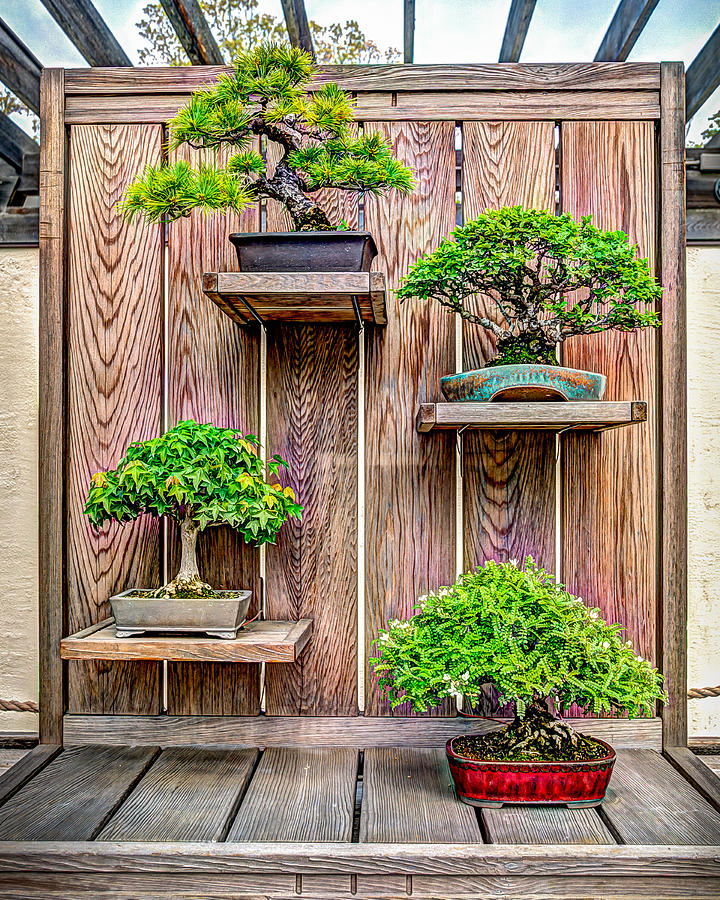
Now that you know how much space you have, it’s time to decide what type of shelving you want. While it’s not necessary, we do recommend it to keep all your small trees in place. It will also protect them from harsh sunlight or winds. You can also use the height on your balcony as an advantage to put as many bonsais on it as your heart desires.
You’ll need storage for your bonsai tools so that your shears, wire, and pruners remain safe. You don’t really need to keep it on your balcony, as long as you have a location for it in your home. If you can manage to keep it near your bonsais, you won’t need to walk around so much when it’s time for shaping and maintenance.
05. Designing the Layout for Your Bonsai Balcony:
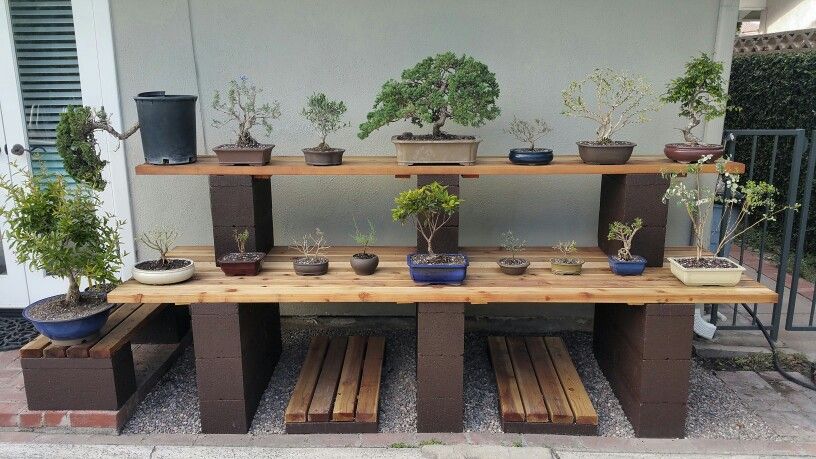
You can now go ahead and start designing the balcony layout based on the measurements, the bonsai species you want, and the shelving and storage. We love doing so by hand, but there’s no reason you can’t use computer software to assist you. It helps if you’ve already measured the shelves you’ve spotted so you can plan where to place them.

There are also stands you can buy to put your bonsais on, or you can simply just use the balcony floor. Of course, it depends on if you have a railing or low wall, which will affect how much sunlight the small tree receives.
Caring for your Bonsai Balcony
With your ultimate design in hand, you can now go ahead and buy what you need for your balcony. However, you might want to take a breather and perform some research on what care your bonsai species will need. Here’s a quick list of the elements you need to look out for.
01. Water Requirements:
Just like trees in nature, there are various watering needs for different Bonsai species. Some can live in drought-like conditions while others will need to be watered daily in spring and summer. You’ll need to decide how much commitment you have for your future bonsai balcony.
One other aspect you should consider is drainage. Usually, bonsais don’t have water trays so that the roots don’t become rotten in soggy soil. To protect your balcony floor from damage, you may need to consider using humidity trays, which will collect the liquid and help retain moisture in the air. With open racks or shelves, you can let one pot drip onto the other one below.
02. Feeding your Bonsai:
When spring and summer arrive, your bonsais will need some nutrients to develop new leaves, flowers, and seeds. Every species has a different preference between alkaline and acidic soil, and how much nitrogen, phosphorous, or potassium (NPK) it needs. When you select bonsais for your balcony, do some research on the best fertilizer for them.
03. Pests and Diseases:
With your balconies living in open space, they’re exposed to various bugs and diseases. They love to live on and feed off the leaves, branches, and flowers, while some prefer the roots. Mold is also a culprit in high humidity, damp regions, especially if there’s low sunlight by your balcony. Keep an eye on your bonsais to make sure there are no pests roaming around.
04. Securing Your Small Trees:
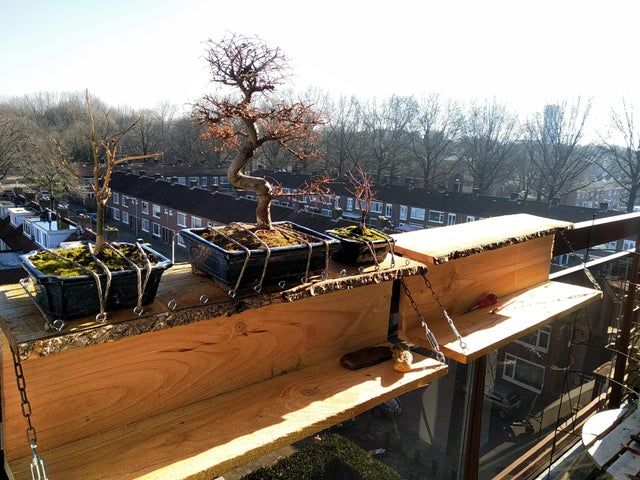
Giving your bonsais a home on your balcony is different from placing them in your backyard or in your home. Strong winds will quickly blow over the lighter containers, while they’ll also wreak havoc on the branches and leaves. You should secure them with wires to your shelves or support structures, especially if you have small children and pets that enter the area.
05. Watch out for Winter:
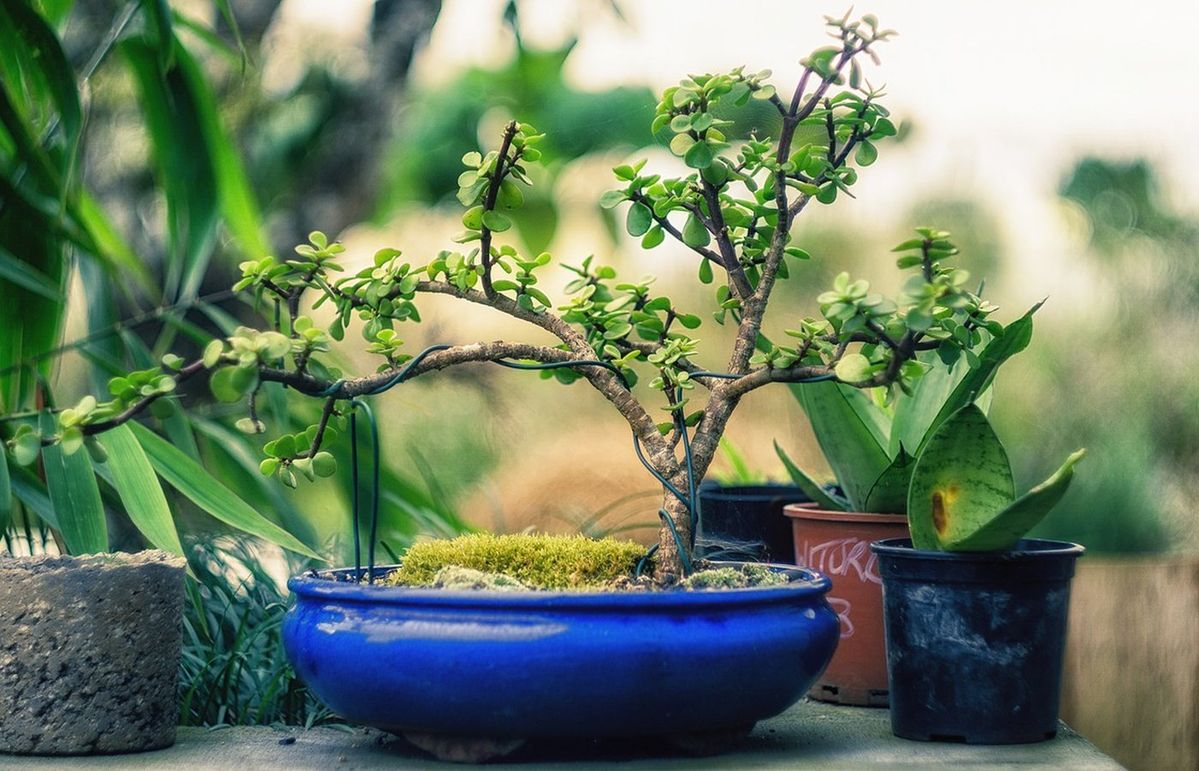
There are many bonsai trees that aren’t fond of cold climates or frost. They can easily die when exposed to cold temperatures for too long, so don’t assume your bonsai is simply shedding leaves during its dormancy period. You may need to set space aside inside your home or make plans to protect them on your balcony.
Enjoy Your Peaceful Area
It’s a brave decision to create a bonsai balcony, especially for an apartment. There are so many aspects you need to consider first, and you may not succeed at first. However, getting it right provides the ultimate reward, and you can settle down in your chair with a good book and cup of coffee to enjoy the setting.This was all about bonsai balcony, but apart from this, we also have a really interesting blog on design ideas to decorate your balcony with variety of indoor plants including bonsai:
Image Courtesy: Image 3, Image 4, Image 6, Image 7, Image 8, Image 9, Image 10, Image 11
